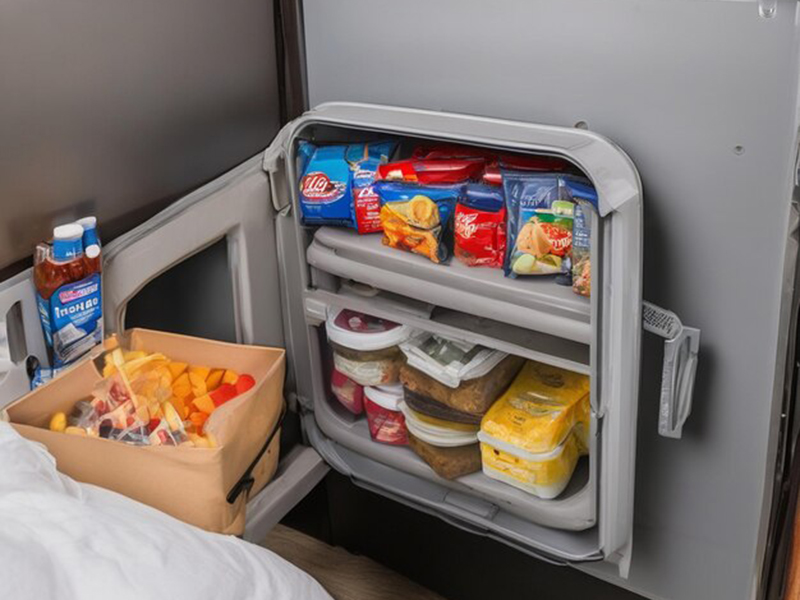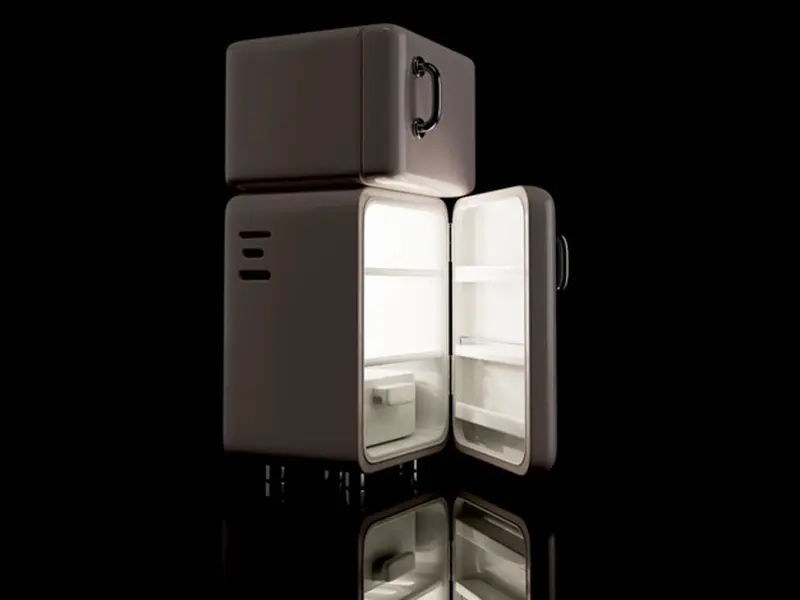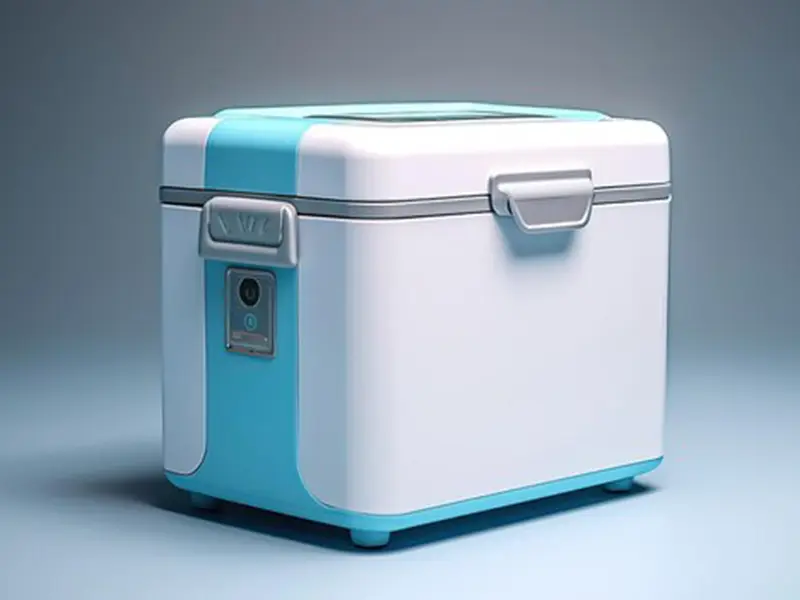2025 Predictions: 5 Innovations in Condenser Technology

Condenser technology is reshaping industries by driving energy efficiency and sustainability. The global demand for energy-saving HVAC systems and eco-friendly refrigerants has surged. Companies like senjun are pioneering advancements in Wire Tube Condenser designs, offering innovative solutions for refrigeration and cooling systems that align with environmental goals and enhance operational performance.
Key Takeaways
- New materials like nanomaterials and light composites help move heat better. They also save energy in condensers, making cooling systems work faster.
- IoT technology helps check condenser performance instantly. This allows fixing problems early, reducing breaks and making machines last longer.
- Smaller condensers make tiny and portable devices possible. This meets the need for good cooling in small spaces.
Advanced Materials for Enhanced Efficiency
Nanomaterials for Superior Heat Transfer
Nanomaterials are revolutionizing condenser technology by enhancing thermal performance. I’ve seen firsthand how these materials, with their microscopic structures, improve heat transfer efficiency. Recent studies on hybrid nanofluids in copper heat pipes demonstrate remarkable advancements. For instance:
- CuO-water nanofluids significantly boost heat transfer in double-pipe heat exchangers.
- ZnO-water nanofluids show similar enhancements, proving their versatility across applications.
- Experimental investigations validate the superior performance of nanomaterials, particularly in systems requiring precise thermal management.
These breakthroughs are paving the way for more efficient cooling systems, including Wire Tube Condensers, which benefit from the improved heat transfer capabilities of nanomaterials.
Lightweight Composites for Reduced Energy Loss
Lightweight composites are another game-changer in condenser design. Their ability to minimize energy loss while maintaining structural integrity is impressive. Performance metrics highlight their impact:
| Performance Metric | Value/Description |
|---|---|
| Energy Savings | Significant reductions in energy consumption, especially in pre-cooled systems. |
| Coefficient of Performance (COP) | Boosted by 4-7% per °C increase in ambient temperature. |
| Temperature Differential (ΔT) | Improved inlet and outlet air temperature differences, optimizing cooling efficiency. |
| Reduction in Cycling Frequency | Lower cycling rates, enhancing system longevity and reducing operational costs. |
These composites are ideal for applications requiring lightweight yet durable materials, such as portable cooling devices and compact Wire Tube Condensers.
Smart Condensers with IoT Integration

Real-Time Monitoring for Predictive Maintenance
The integration of IoT into condenser technology has transformed how we approach maintenance. Real-time monitoring systems now allow us to track performance metrics continuously. These systems identify potential issues before they escalate, reducing downtime and repair costs. For example, sensors embedded in condensers can detect anomalies in temperature, pressure, or airflow. This data is transmitted to a centralized dashboard, enabling technicians to act proactively.
I’ve observed how this technology enhances the reliability of systems like the Wire Tube Condenser. By leveraging predictive maintenance, businesses can extend the lifespan of their equipment and optimize operational efficiency. This approach not only minimizes unexpected failures but also reduces the environmental impact by ensuring systems operate at peak performance.
Smart Grid Integration for Energy Optimization
Smart grid integration represents a significant leap forward in energy management for condensers. By connecting to a smart grid, condensers can adjust their energy consumption based on real-time demand. This dynamic optimization reduces energy waste and lowers operational costs.
The benefits of this integration are evident in measurable metrics:
| Metric | Value |
|---|---|
| Energy savings (EC pad) | 38.5% |
| Energy savings (Mist Cooling) | 12.14% - 42.52% |
| Combined energy savings (EC pad + Mist) | 39.2% |
| COP improvement (EC pad) | 3.0 to 5.3 |
| COP improvement (Mist Cooling) | 2.6 to 4.7 |
| COP improvement (Combined) | 2.8 to 5.0 |
| Temperature reduction effectiveness (EC pad) | 0.55 - 0.63 |
| Temperature reduction effectiveness (Mist Cooling) | 0.43 - 0.48 |
| Cycling frequency reduction | 7 to 5 cycles/hour |
These advancements maximize energy savings and deliver cost benefits with quick payback periods. I’ve seen how this technology, when applied to systems like the Wire Tube Condenser, ensures efficient energy use while maintaining optimal cooling performance.
Miniaturization for Compact Applications
Smaller Condensers for Electronics and Wearables
Miniaturization is redefining condenser technology, especially for electronics and wearable devices. I’ve observed how compact designs are enabling breakthroughs in industries that demand precision and portability. For example:
- Miniature condensers are being tailored for compact microscopy systems, enhancing optical performance with advanced coatings.
- Smart features and digital technologies are being integrated to improve user experience and streamline data analysis.
- Achromatic air condenser designs are gaining traction due to their compatibility with automated microscopy systems.
These innovations are not just about reducing size; they’re about creating smarter, more efficient systems. I’ve seen how the demand for phase contrast functionalities and user-friendly designs is driving this trend. Miniaturization is empowering industries to deliver high-performance solutions in smaller packages, meeting the needs of modern consumers.
Applications in Portable and Space-Saving Devices
Portable and space-saving devices are benefiting immensely from advancements in condenser technology. I’ve noticed how performance metrics highlight the efficiency of these systems in diverse applications:
| Performance Metric | Description |
|---|---|
| Energy Savings | Significant reductions in energy consumption compared to standard operation. |
| Operational Efficiency (COP) | Enhanced cooling output with lower energy usage, ensuring reliability and durability. |
| Temperature Differential (ΔT) | Improved air temperature reduction entering the condenser, optimizing cooling performance. |
| Water Usage | Strategic use in mist-based cooling systems, minimizing waste. |
| Predictive Model | Accurate estimations of condensate quantity for diverse environmental conditions. |
| Heat Transfer Surface Assessment | Better temperature gradient differences during pre-cooling modes. |
These metrics demonstrate how portable condensers are transforming industries like medical refrigeration and dehumidification. I’ve seen firsthand how compact designs, such as those developed by senjun, are enabling efficient cooling solutions in tight spaces. Miniaturization is not just a trend; it’s a necessity for modern applications where space and portability are critical.
Sustainable and Eco-Friendly Designs

Recyclable and Biodegradable Materials
Sustainability has become a cornerstone of modern condenser technology. I’ve noticed how manufacturers are increasingly turning to recyclable materials like aluminum to reduce environmental impact. Aluminum condensers, for instance, not only enhance energy efficiency but also improve vehicle fuel performance. Their recyclability makes them a preferred choice for eco-conscious industries. Many companies now use recycled aluminum, aligning their practices with global sustainability goals.
In addition to aluminum, I’ve seen a growing interest in biodegradable materials for specific applications. These materials break down naturally, minimizing waste and pollution. This shift toward eco-friendly designs reflects a broader commitment to reducing the carbon footprint of cooling systems.
- Aluminum condensers lower electricity requirements, reducing greenhouse gas emissions.
- Advanced heat exchangers capture waste heat, promoting energy conservation.
- Recycled materials contribute to a circular economy, reducing resource depletion.
These innovations demonstrate how sustainable materials can drive both performance and environmental responsibility.
Reduction of Harmful Refrigerants in Cooling Systems
The push to eliminate harmful refrigerants has gained momentum in recent years. I’ve observed how modern condensers now rely on alternative refrigerants with lower global warming potential (GWP). These alternatives, such as hydrofluoroolefins (HFOs), significantly reduce the environmental impact of cooling systems.
Energy-efficient designs also play a critical role. By optimizing heat transfer and reducing energy consumption, these systems lower the demand for electricity. This, in turn, reduces emissions from power generation. I’ve seen how these advancements are transforming industries like HVAC and refrigeration, making them more sustainable.
The future of condenser technology lies in balancing performance with environmental stewardship. By adopting eco-friendly materials and refrigerants, we can achieve both. 🌍
Hybrid Systems and Wire Tube Condenser Innovations
Combining Condenser and Heat Pump Technologies
Hybrid systems are transforming the way we approach heating and cooling. By combining condenser and heat pump technologies, these systems deliver both energy efficiency and sustainability. I’ve observed how advancements in compact heat exchangers and hybrid designs are enabling seamless integration of heating and cooling functions. For instance, trends in renewable energy integration have made condensers more efficient and environmentally friendly.
| Component Type | Description |
|---|---|
| Heat Exchangers | Trends in compact designs and hybrid technologies combining heating and cooling functions. |
| Condensers | Integration with renewable energy sources for enhanced energy efficiency and sustainability. |
| Heat Pumps | Focus on advancements in performance and efficiency in HVAC systems. |
Adiabatic pre-cooling systems also play a critical role in improving cooling efficiency. However, I’ve noticed that optimizing these systems across different climates remains a challenge. Despite this, the potential for hybrid systems to reduce energy consumption and operational costs is undeniable. These innovations are paving the way for a more sustainable future in HVAC and refrigeration industries.
Senjun’s Role in Advancing Wire Tube Condenser Applications
Senjun has been at the forefront of innovation in Wire Tube Condenser technology. Their products significantly enhance the performance and sustainability of industrial refrigeration systems. I’ve seen how their advanced heat exchangers, with high surface area-to-volume ratio designs, improve heat transfer efficiency. This not only reduces energy consumption but also lowers maintenance costs over time.
One of the key barriers to adopting advanced condensers is a lack of awareness about their benefits. Senjun addresses this by showcasing the long-term savings and environmental advantages of their products. Their Wire Tube Condensers are ideal for applications in refrigerators, freezers, and medical ultra-low temperature refrigerators. By aligning their innovations with global energy efficiency standards, Senjun is driving the adoption of sustainable cooling solutions.
“The future of refrigeration lies in advanced technologies like Wire Tube Condensers. Companies like Senjun are leading the charge toward a greener, more efficient world.”
The five innovations in condenser technology—advanced materials, IoT integration, miniaturization, eco-friendly designs, and hybrid systems—are reshaping industries.
- In 2020, top tech companies procured 7.2 GW of renewable capacity, representing 30% of corporate PPAs and 3.5% of global renewable additions.
- Senjun’s advancements in Wire Tube Condensers drive sustainability and efficiency.
I foresee condenser technology addressing energy challenges globally, fostering a greener future.
FAQ
What industries benefit the most from condenser technology advancements?
Industries like HVAC, electronics, and medical refrigeration see the greatest impact. I’ve noticed how these innovations improve energy efficiency and sustainability across these sectors.
How does IoT integration enhance condenser performance?
IoT enables real-time monitoring and predictive maintenance. I’ve observed how this reduces downtime, optimizes energy use, and extends equipment lifespan.
Why is miniaturization important in condenser technology?
Miniaturization supports compact designs for electronics and portable devices. I’ve seen how it meets modern demands for space-saving, high-performance cooling solutions.


















